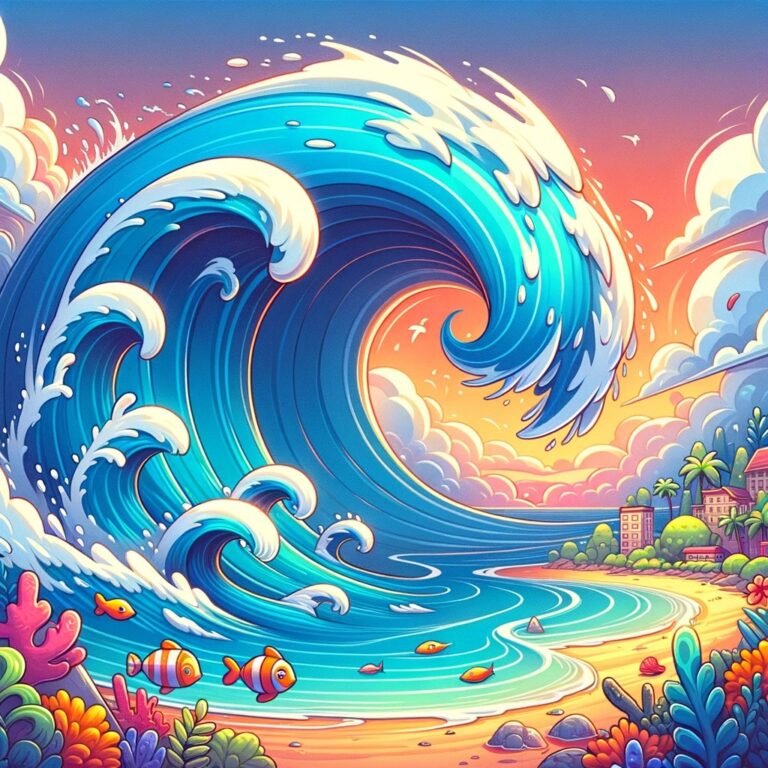Welcome to our blog post on Tsunami Facts For Kids! Whether you’re a young child fascinated by the power of nature or an older kid eager to delve into the science behind tsunamis, this compilation of fun and educational facts is sure to capture your attention. From the triggers of these massive waves to their incredible speeds and heights, there’s a lot to learn about these natural disasters that can have devastating consequences. Explore the origins of the word “tsunami,” understand the difference between tsunamis and high tides, and discover how early warning systems play a crucial role in saving lives during these catastrophic events. Join us on a journey through the fascinating world of tsunamis and gain a deeper understanding of the forces that shape our planet’s oceans.
Tsunami Facts For Kids
1. Tsunamis are Often Triggered by Earthquakes
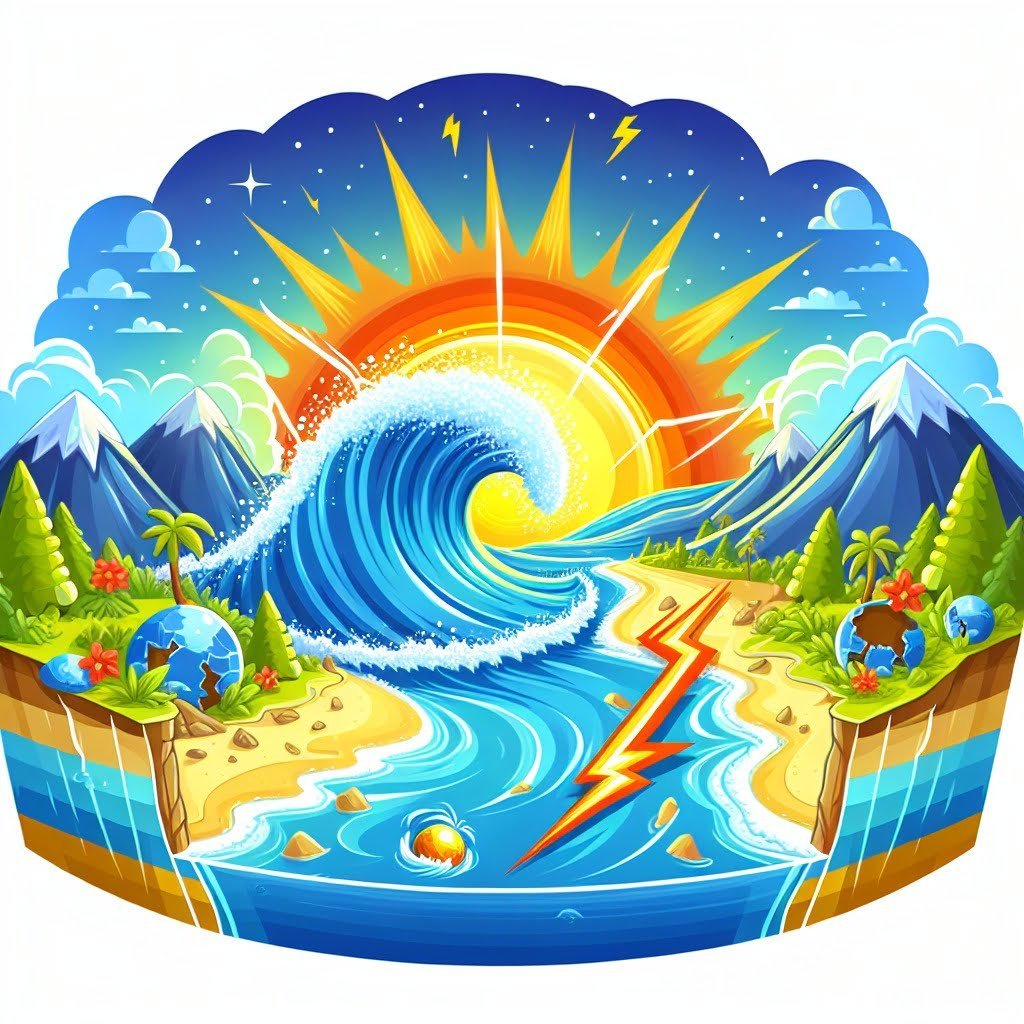
For younger kids: Tsunamis can be caused by big shaking on the ocean floor.
For older kids: Tsunamis are frequently set off by underwater earthquakes, landslides, volcanic eruptions, or meteorite impacts, creating massive waves that travel across oceans with devastating force.
Detailed explanation:Tsunamis are one of the most powerful and destructive natural disasters that can occur in the world’s oceans. One of the key Tsunami Facts For Kids to understand is that tsunamis are often triggered by earthquakes. When an earthquake occurs under the ocean floor, it can cause a rapid displacement of the water above. This sudden movement of the water creates a series of powerful waves that travel across the ocean, eventually reaching the coastline.
The intensity of a tsunami is directly related to the magnitude of the earthquake that triggered it. The larger and more powerful the earthquake, the bigger and more destructive the resulting tsunami will be. This is why regions that are prone to earthquakes, such as the Pacific Ring of Fire, are also at a higher risk for tsunamis.
Once a tsunami is generated, it can travel across the ocean at speeds of up to 500 miles per hour. This rapid speed can make it difficult to predict exactly when and where a tsunami will make landfall, which is why early warning systems are crucial in saving lives.
When a tsunami reaches the coastline, it can cause massive destruction to coastal communities. The powerful waves can flood coastal areas, destroying buildings, infrastructure, and causing widespread devastation. It is important for kids to understand the science behind tsunamis so that they can be better prepared in the event of a natural disaster.
In conclusion, tsunamis are often triggered by earthquakes, and understanding this relationship is key to being able to predict and prepare for these powerful natural disasters. By learning more about tsunamis, kids can become more informed and better equipped to handle the potential dangers they pose.
Tsunami Facts For Kids
2. Tsunamis Can Reach Heights of Over 100 Feet
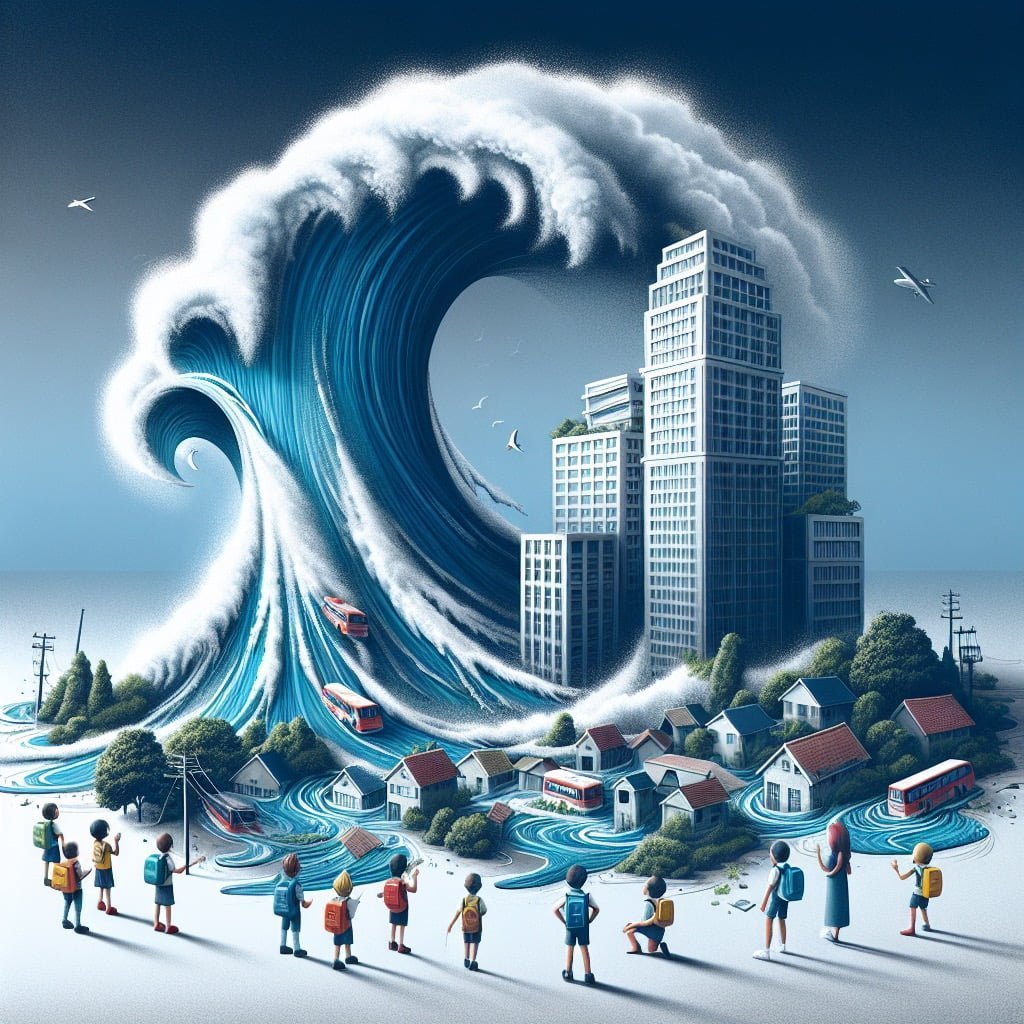
For younger kids: Tsunamis can be as tall as a very tall building!
For older kids: The destructive power of tsunamis is evident in their towering heights, which can exceed 100 feet as they crash onto coastlines, causing widespread damage and loss of life.
Detailed explanation:Tsunamis are powerful and destructive natural disasters that are caused by underwater earthquakes, volcanic eruptions, or landslides. These intense phenomena can generate massive ocean waves that travel at high speeds across the sea, eventually crashing onto shorelines with tremendous force. One of the most alarming and frightening aspects of tsunamis is their ability to reach towering heights of over 100 feet, posing a significant threat to coastal communities.
For kids, understanding the science behind tsunamis can be both fascinating and educational. By learning about the factors that contribute to the formation of these towering waves, children can gain a deeper appreciation for the power of nature and the importance of preparedness in the face of natural disasters. Tsunami facts for kids can help them grasp concepts such as seismic activity, wave propagation, and the impact of underwater disturbances on the earth’s surface.
Educating children about tsunamis can also empower them to recognize the warning signs of an impending tsunami and take appropriate safety measures. By teaching kids how to respond to tsunami alerts and evacuation procedures, parents and educators can help ensure the safety and well-being of young individuals in vulnerable coastal areas.
In conclusion, tsunamis can indeed reach heights of over 100 feet, making them one of the most awe-inspiring and potentially dangerous natural phenomena on the planet. By educating kids about tsunami facts and safety precautions, we can equip them with the knowledge and skills needed to protect themselves and others in the event of a tsunami emergency.
Tsunami Facts For Kids
3. The Word ‘Tsunami’ Comes from Japan
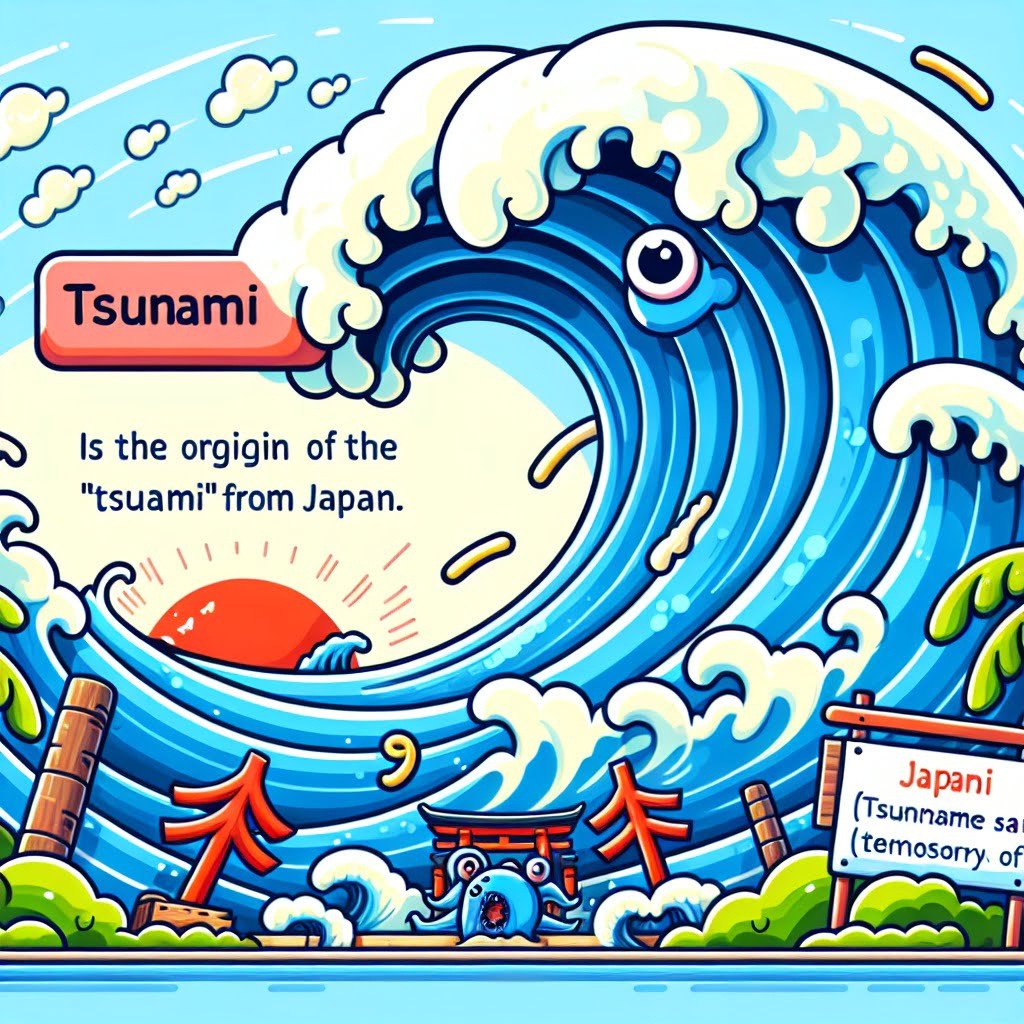
For younger kids: The word “tsunami” comes from a country called Japan!
For older kids: The term “tsunami” originates from Japan, where these destructive ocean waves are relatively common due to the country’s location along major tectonic plate boundaries.
Detailed explanation:Tsunamis are large, powerful ocean waves caused by underwater earthquakes, volcanic eruptions, or landslides. These natural disasters can cause widespread destruction along coastlines, making it important for people, especially children, to understand the dangers they pose.
One interesting Tsunami Fact For Kids is that the word ‘tsunami’ actually comes from Japan. The term ‘tsunami’ is a combination of two Japanese words: ‘tsu’ meaning harbor and ‘nami’ meaning wave. This is fitting, as Japan is a country that has experienced numerous devastating tsunamis throughout its history due to its location along the Pacific Ring of Fire, where tectonic plate movements are frequent.
Understanding the origin of the word ‘tsunami’ can help children grasp the connection between the name and the phenomenon itself. By knowing that the term originates from Japan, kids can appreciate the cultural significance of tsunamis in Japanese history and society.
Educating children about tsunami facts is crucial for their safety and preparedness in the face of such natural disasters. Teaching them the etymology of the word ‘tsunami’ can both pique their interest and deepen their understanding of these powerful ocean waves. By learning about the origins of the term, kids can better comprehend the impact tsunamis have had on Japan and other coastal regions around the world.
Tsunami Facts For Kids
4. Tsunamis Can Travel at Speeds Up to 500 MPH
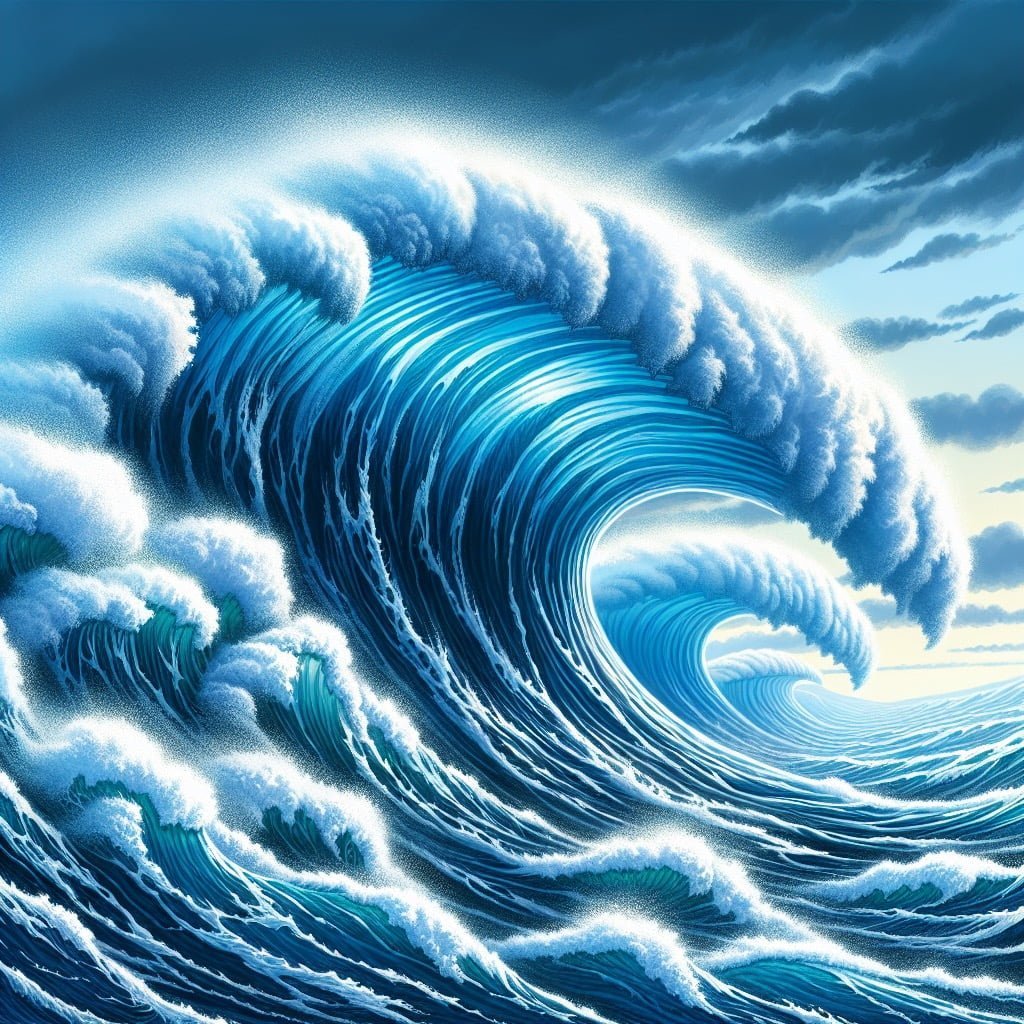
For younger kids: Tsunamis can move as fast as some super-fast cars!
For older kids: Tsunamis exhibit remarkable speed, racing across the ocean at velocities that can reach up to 500 miles per hour, ensuring their rapid and forceful impact upon reaching coastlines.
Detailed explanation:Tsunami Facts For Kids: One of the most startling and potentially terrifying aspects of tsunamis is how rapidly they can travel across vast stretches of ocean. It is indeed a fact that tsunamis can reach speeds of up to 500 miles per hour, making them one of the fastest natural disasters on the planet.
The incredible speed at which tsunamis travel is largely due to their long wavelength and low amplitude. Unlike normal ocean waves, which are caused by wind and tend to move in a circular motion, tsunamis are triggered by underwater disturbances such as earthquakes, landslides, or volcanic eruptions. These disturbances displace a large volume of water, creating a powerful wave that can travel thousands of miles without losing much of its energy.
Tsunamis can move across the open ocean at speeds that are difficult to comprehend. In some cases, a tsunami can traverse the entire Pacific Ocean in less than a day, reaching far-off coastlines with devastating consequences. This incredible speed is what makes tsunamis so dangerous and difficult to predict, as they can strike without much warning and unleash immense destruction within minutes.
For kids learning about tsunamis, it is important to emphasize the importance of early warning systems and evacuation plans in order to minimize the impact of these powerful natural events. While tsunamis can travel at incredible speeds, with the right preparation and awareness, communities can mitigate their effects and keep themselves safe in the face of this unstoppable force of nature.
Tsunami Facts For Kids
5. Tsunamis Can Affect the Entire Ocean Depth
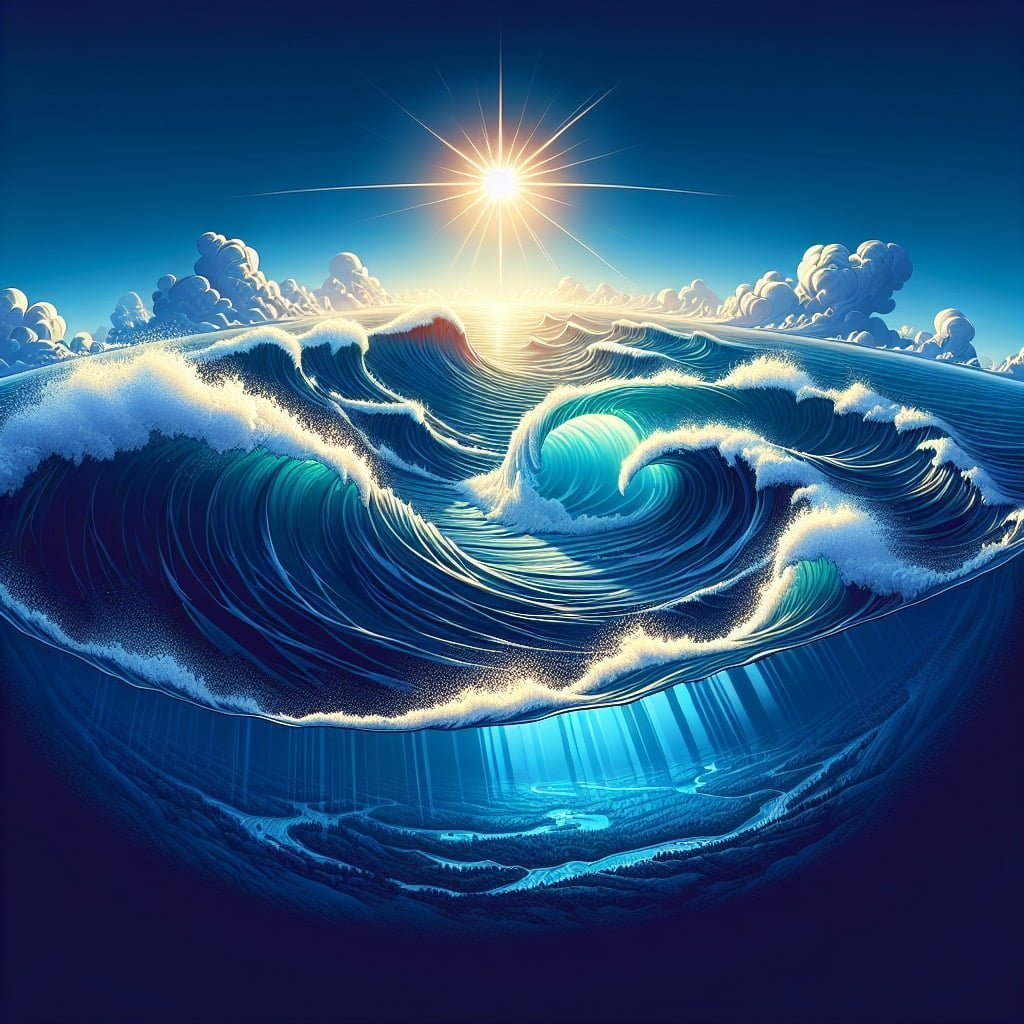
For younger kids: Tsunamis are so big they can go all the way down to the deep ocean floor!
For older kids: The immense energy of a tsunami isn’t just surface-level – it can penetrate the entire ocean depth, from the sea surface down to the ocean floor, generating powerful underwater currents.
Detailed explanation:Tsunami Facts For Kids: Tsunamis are incredibly powerful and destructive natural phenomena that can affect the entire ocean depth. When a tsunami is generated, typically by an underwater earthquake, volcanic eruption, or landslide, it creates a series of powerful waves that ripple outwards across the ocean. These waves can travel at hundreds of miles per hour, reaching incredible heights as they approach shorelines.
One of the unique characteristics of tsunamis is their ability to affect the entire ocean depth. Unlike normal ocean waves that are limited to the upper surface of the water, tsunamis can travel all the way down to the ocean floor. As a result, even marine life deep within the ocean can be impacted by the powerful force of a tsunami.
The impact of a tsunami can be devastating, especially near populated coastal areas. As the tsunami waves approach shallow waters near coastlines, they slow down and can grow in height, forming massive walls of water that crash onto the shore with incredible force. This can lead to widespread destruction of buildings, infrastructure, and natural habitats, as well as loss of life.
It is important for kids to understand the power of tsunamis and the importance of being prepared in the event of one. Learning about tsunami facts can help children understand the science behind these natural disasters and how they can stay safe in the event of a tsunami warning. By knowing what to do and where to go in the event of a tsunami, kids can help protect themselves and their families from the devastating effects of these powerful waves.
Tsunami Facts For Kids
6. Tsunamis Are Not Caused by High Tides
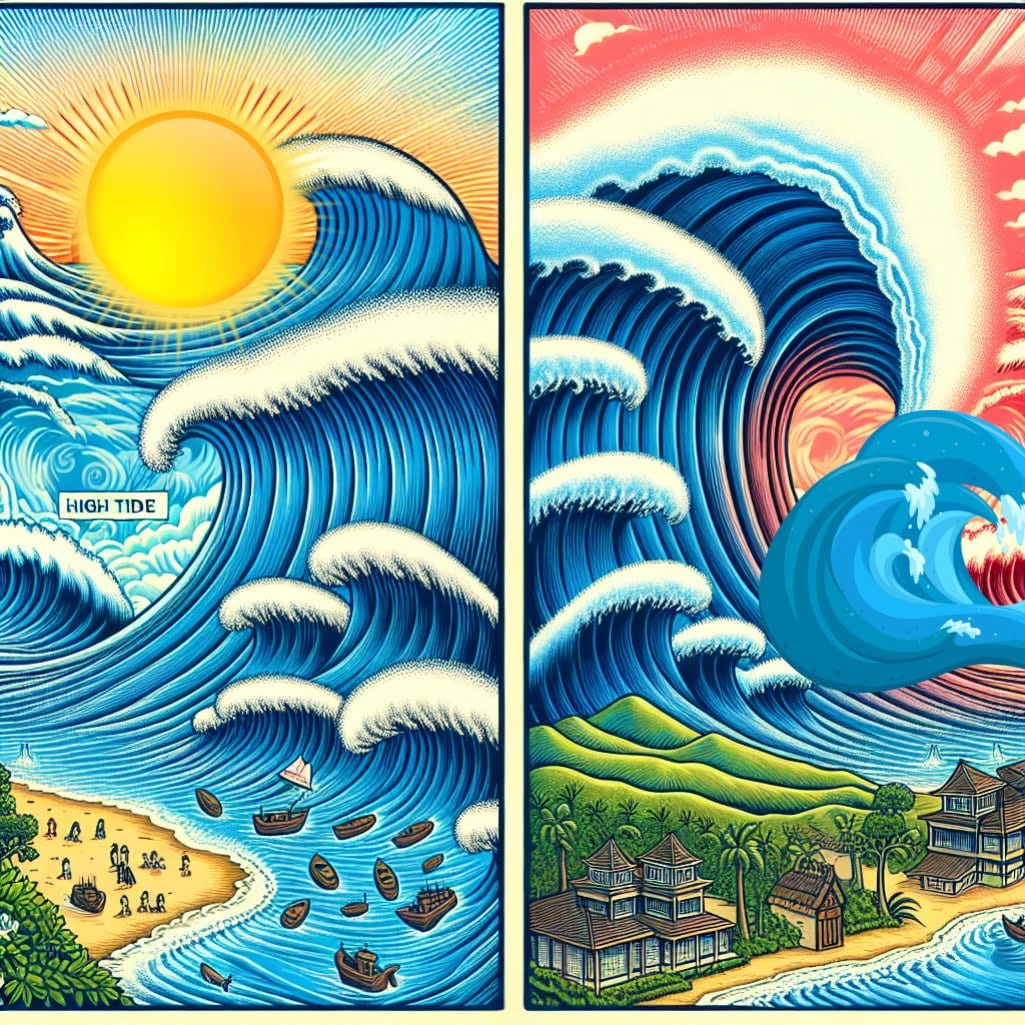
For younger kids: Tsunamis are different from regular high tides, even though they both involve water!
For older kids: It’s crucial to differentiate tsunamis from high tides – tsunamis are triggered by geological events, while high tides are simply the periodic rise and fall of water level due to gravitational forces like the moon’s pull.
Detailed explanation:Tsunamis are a fascinating but often misunderstood natural phenomenon that can have devastating effects on coastal communities. Despite what many people may think, tsunamis are not caused by high tides. While both tsunamis and high tides involve the movement of large bodies of water, the mechanisms behind them are quite different.
Tsunamis are typically triggered by underwater earthquakes, volcanic eruptions, or landslides that displace a large volume of water. This sudden displacement sets off a series of waves that can travel across the ocean at high speeds, eventually reaching the shore and causing widespread destruction. In some cases, tsunamis can also be generated by meteorite impacts or underwater explosions, but these events are relatively rare.
On the other hand, high tides are caused by the gravitational pull of the moon and the sun, which create bulges of water that move around the Earth as the planet rotates. While high tides can lead to localized flooding along coastlines, they do not have the same destructive power as tsunamis. High tides occur regularly and predictably, whereas tsunamis are much less frequent but can be far more dangerous.
It is important for kids to understand the difference between tsunamis and high tides so that they can be better prepared for any potential natural disasters. By learning more about the causes and effects of tsunamis, kids can help contribute to disaster preparedness and response efforts in their communities. Stay informed, stay safe!
Tsunami Facts For Kids
7. Tsunami Waves Can Travel Across Entire Oceans
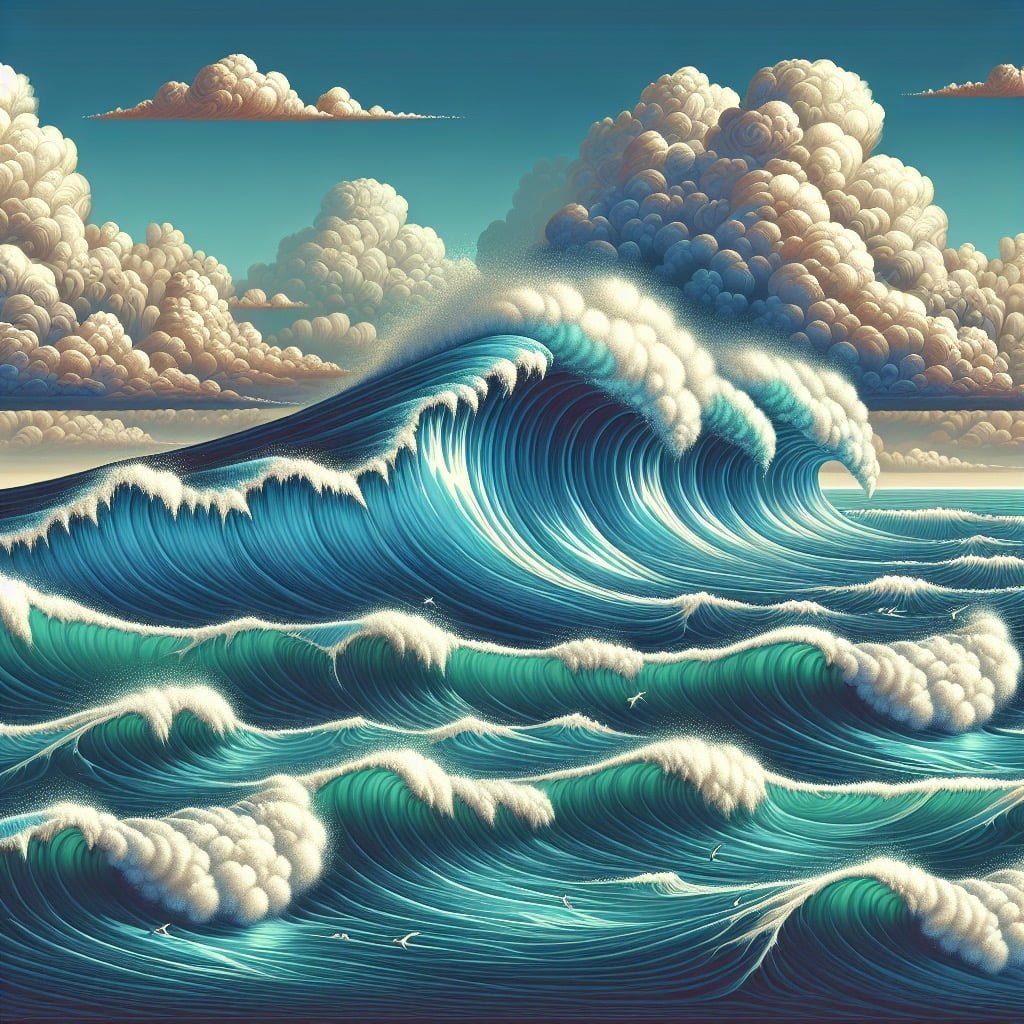
For younger kids: Tsunami waves can travel really long distances all the way across oceans!
For older kids: Tsunami waves possess exceptional energy to traverse entire oceans, originating from a single point and spreading across vast distances, impacting coastlines far from the tsunami’s source.
Detailed explanation:Tsunamis are incredibly powerful and destructive natural phenomena that can have far-reaching effects across vast distances. One of the most astounding tsunami facts for kids to understand is that tsunami waves have the ability to travel across entire oceans.
When a tsunami is triggered, usually by an underwater earthquake or volcanic eruption, it generates a series of powerful waves that can travel at incredibly high speeds across the open ocean. Unlike normal ocean waves that are caused by wind, tsunami waves are driven by the displacement of water due to the seismic activity. This allows them to travel great distances without losing their energy.
As these tsunami waves move across the ocean, they can reach speeds of up to 500 to 600 miles per hour, which is faster than a commercial jet plane. This rapid speed, combined with their long wavelengths, enables them to cross entire oceans in a matter of hours. For example, a tsunami generated in the Pacific Ocean could potentially reach the coast of Japan or the west coast of the United States within hours after it was triggered.
The ability of tsunami waves to travel across entire oceans is what makes them such a significant and dangerous natural hazard. Coastal communities around the world must be prepared and have early warning systems in place to ensure they can evacuate in time when a tsunami threat is detected. By understanding this key aspect of tsunamis, we can better appreciate the immense power and potential devastation that they can bring.
Tsunami Facts For Kids
8. Tsunamis Can Cause Multiple Waves
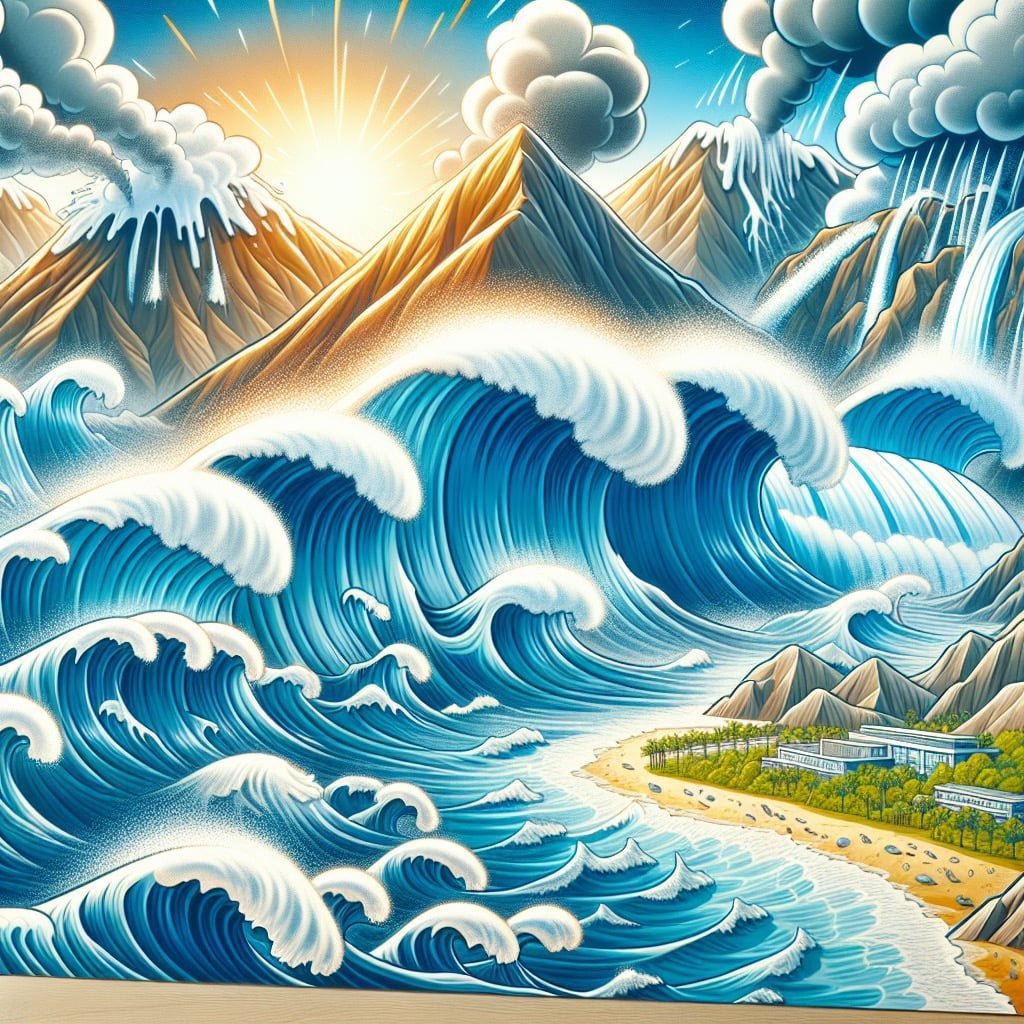
For younger kids: Tsunamis don’t just come once – sometimes they bring more than one wave!
For older kids: Tsunami events can be complex, with multiple waves arriving at different intervals, leading to the danger of subsequent waves being larger and more destructive than the initial wave.
Detailed explanation:Tsunamis are one of the most devastating natural disasters that can occur. They are usually triggered by underwater earthquakes, volcanic eruptions, or landslides, and can cause immense destruction along coastlines. One lesser-known fact about tsunamis is that they can cause multiple waves to hit a region.
When an underwater disturbance occurs, such as an earthquake, it creates a series of waves that move rapidly across the ocean. The first wave to reach the shore is not always the most powerful, as subsequent waves can be even larger and more destructive. This is due to the complex interactions between the initial wave and the underwater topography, which can amplify or diminish the wave’s height and strength.
For kids, understanding that tsunamis can cause multiple waves is important for their safety and preparedness. It means that even after the first wave hits, there may be more to come, and they should not assume that the danger has passed. This knowledge can help them and their families stay alert and evacuate to higher ground if necessary.
In conclusion, tsunamis are not just single, giant waves crashing onto the shore. They can actually produce multiple waves of varying sizes, making them even more unpredictable and dangerous. By being aware of this fact, people can be better prepared and hopefully minimize the impact of these catastrophic events.
Tsunami Facts For Kids
9. Warning Signs for Tsunamis Include Earthquakes and Receding Waters
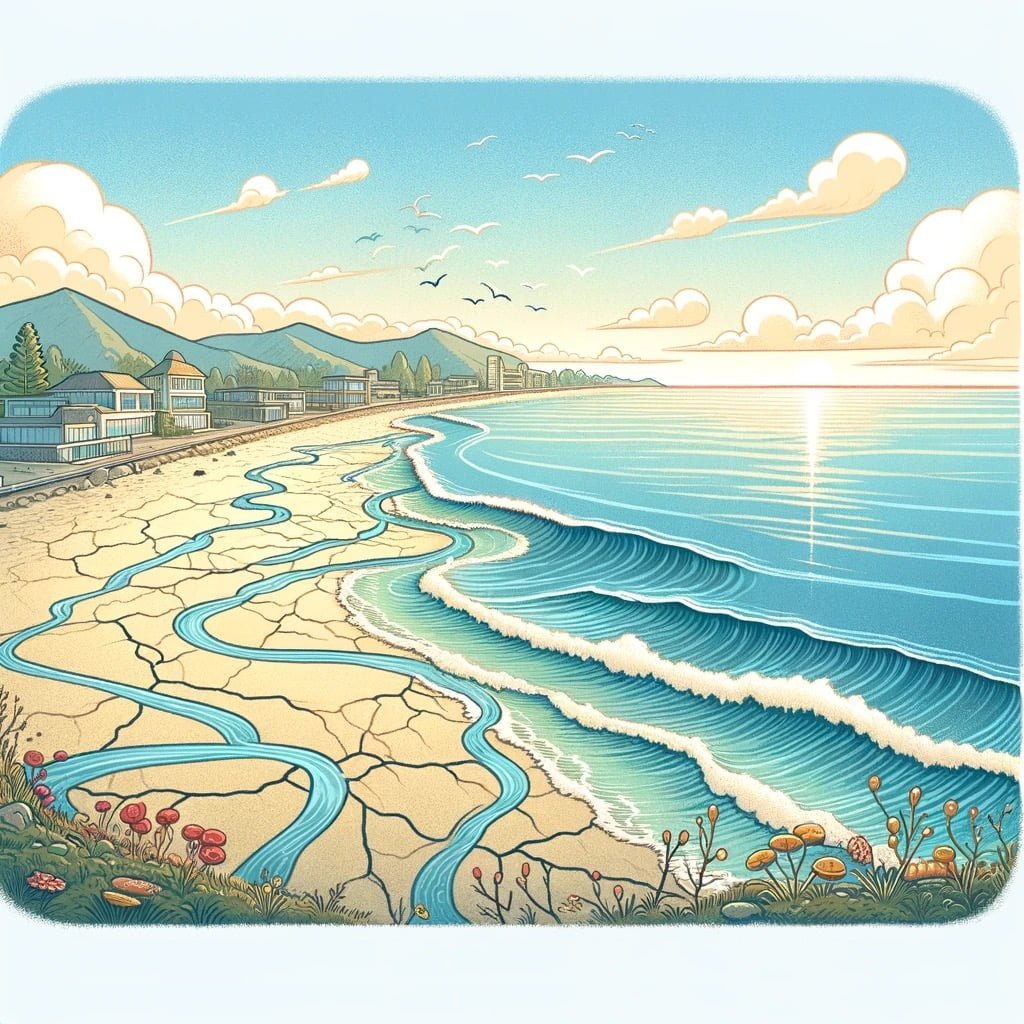
For younger kids: You can sometimes tell a tsunami is coming if the water moves away very quickly!
For older kids: Recognizing the warning signs of a tsunami is crucial for coastal communities, including sudden land-level changes, strong earthquakes, or the unusual retreat of ocean waters, indicating an approaching tsunami that warrants immediate evacuation.
Detailed explanation:Tsunamis are powerful and destructive natural disasters that can cause widespread devastation in coastal areas. They are usually triggered by underwater earthquakes, volcanic eruptions, or landslides that displace a large volume of water. One of the key warning signs of an impending tsunami is an earthquake, especially one that occurs under the ocean. When an underwater earthquake happens, it can generate a series of powerful waves that travel through the ocean at high speeds, eventually building up into a tsunami as they approach the shore.
Another important warning sign of a tsunami is the phenomenon of receding waters. Just before a tsunami hits, the water along the shoreline may suddenly and dramatically pull back, exposing large expanses of the ocean floor. This sudden recession of water is often mistaken for low tide, but it is actually a precursor to the incoming tsunami. This phenomenon is caused by the tsunami’s massive waves drawing water away from the coast as they approach, creating a vacuum effect that pulls water back out to sea.
For kids living in coastal communities, understanding and being able to recognize these warning signs is crucial for their safety. By knowing what to look for, they can take immediate action to seek higher ground or evacuate to designated safe areas before the tsunami strikes. Teaching children about tsunami facts and warning signs can help them stay safe in the event of a tsunami and minimize the risk of injury or loss of life.
Tsunami Facts For Kids
10. Early Warning Systems Help Save Lives During Tsunamis
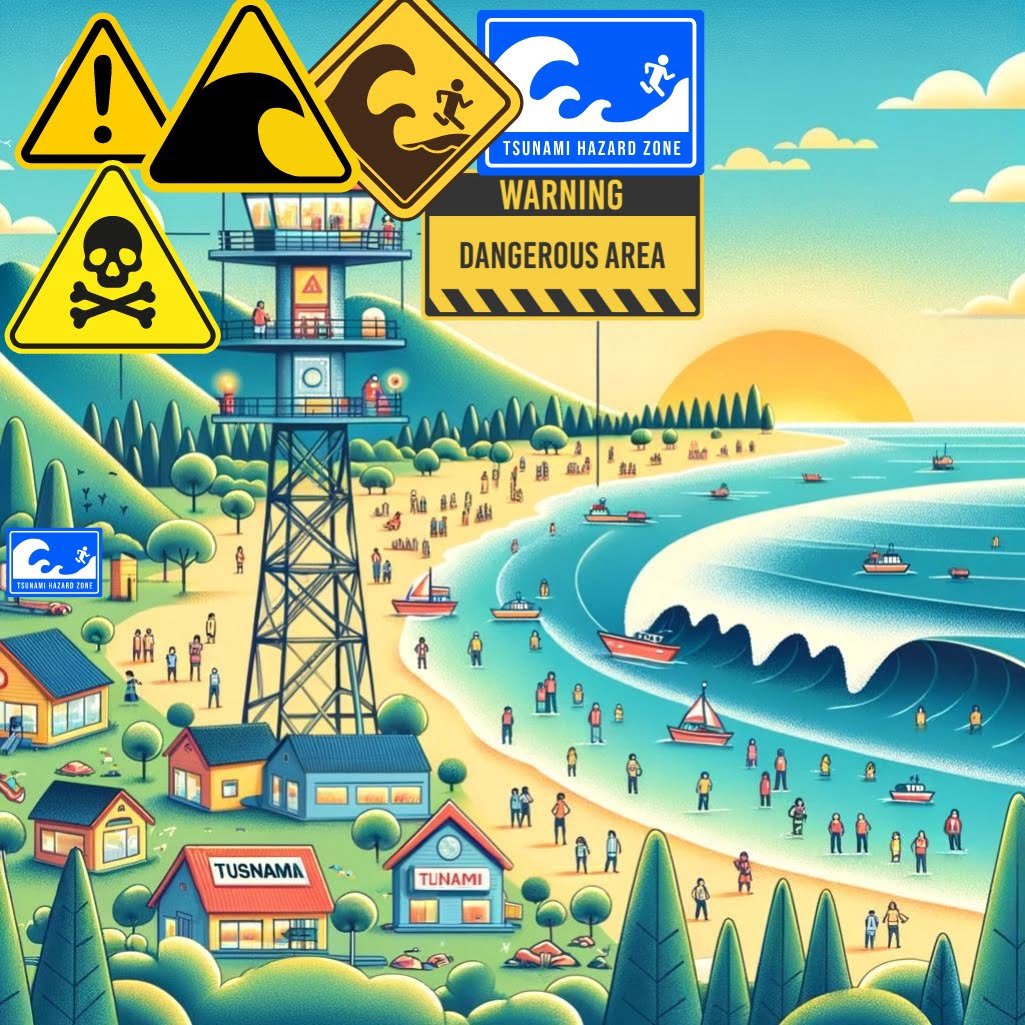
For younger kids: People have special machines that can help warn about tsunamis in advance!
For older kids: Advanced early warning systems equipped with seismometers, buoys, and data processing technologies play a crucial role in alerting coastal regions about tsunamis, enabling timely evacuations and saving countless lives.
Detailed explanation:Tsunami Facts For Kids: Early Warning Systems Help Save Lives During Tsunamis
One of the most crucial aspects of mitigating the devastation caused by tsunamis is the implementation of early warning systems. These systems are designed to detect any potential tsunamis as quickly as possible, giving authorities and residents in at-risk areas precious time to evacuate to safety.
Early warning systems typically rely on a network of buoys, sensors, and seismographs placed strategically in the ocean to monitor for any seismic activity that could indicate an impending tsunami. When these sensors detect a significant underwater disturbance, such as an earthquake or underwater landslide, they send signals to warning centers that can then issue alerts to the public through various communication channels.
For children living in coastal communities prone to tsunamis, understanding the importance of these early warning systems is crucial. By learning the signs of a tsunami and knowing what to do when an alert is issued, kids can play a vital role in their own safety and that of their families.
Educational programs aimed at teaching children about tsunamis, including the science behind them and how early warning systems work, can empower kids to take proactive measures in the event of a tsunami threat. By instilling the importance of preparedness and quick action, these programs help ensure that children are well-informed and ready to respond effectively in a crisis.
In conclusion, early warning systems are essential tools in saving lives during tsunamis. By educating kids about these systems and the importance of heeding tsunami warnings, we can help protect vulnerable communities from the devastating impact of these natural disasters.
Did you know?
Did you know that the largest recorded tsunami in history, which occurred in Alaska in 1958, reached an astonishing height of 1,720 feet?
Summary of Tsunami Facts For Kids
This blog post provides a fascinating insight into the world of tsunamis, offering a variety of fun and informative facts that appeal to both younger and older kids. From the causes of tsunamis to their immense size, speed, and impact on the ocean, each fact is presented in an engaging and easily digestible format. By learning about the origin of the word “tsunami” from Japan, the importance of early warning systems, and how to distinguish tsunamis from high tides, kids can gain a deeper understanding of these powerful natural phenomena. With colorful images and simple explanations, this post is sure to spark curiosity and inspire further exploration into the science behind tsunamis. If you want to expand your knowledge and discover more exciting facts about tsunamis, this blog post is definitely worth a read!
Sources and additional information for Tsunami Facts For Kids
WikipediaBritannicaEnvironmental Protection Agency (EPA)National Oceanic and Atmospheric Administration (NOAA)The Nature ConservancyWorld Wildlife FundEarth Day NetworkGreenpeace InternationalJane Goodall InstituteEnvironmental Protection Agency (EPA)World Wildlife Fund – ConservationNature ConservancyGreenpeaceUnited Nations Environment Programme (UNEP)Conservation InternationalEarthwatch InstituteEnvironmental Defense FundSierra Club
